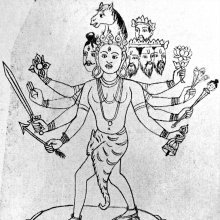Ashva, Aśva, Aśvā, Āśva: 37 definitions
Introduction:
Ashva means something in Buddhism, Pali, Hinduism, Sanskrit, Jainism, Prakrit, the history of ancient India, Hindi, biology. If you want to know the exact meaning, history, etymology or English translation of this term then check out the descriptions on this page. Add your comment or reference to a book if you want to contribute to this summary article.
The Sanskrit terms Aśva and Aśvā and Āśva can be transliterated into English as Asva or Ashva, using the IAST transliteration scheme (?).
Images (photo gallery)
In Hinduism
Purana and Itihasa (epic history)
Source: Google Books: Cultural History from the Vāyu PurānaAśva (अश्व) falls under the category of domesticated animals (grāmya-paśu) according to the Vāyu Purāṇa.
Aśva—The horse is said to have been born of the Creator’s feet. It is included in the list of domesticated animals. We have notes references to stables for horses and to horse-riding. Horses are good gifts for Brahmins in śrāddha and they are regarded useful in sacrificis. Horses were yoked to chariots. A horse was one of the select jewels (atiśaya-ratnāni) of a cakravartin in the Tretā age. The horses of the Gāndhāra country are said to be the best amongst the species. The Aśvinī-nakṣatra is said to be favourable to the acquisition of horses.
Source: archive.org: Puranic Encyclopedia1) Aśva (अश्व).—A demon. This was the same demon who later on was born as Aśoka, King of Kaliṅga. (Chapter 67, Ādi Parva, Mahābhārata).
2) Aśva (अश्व).—A maharṣi. The sage Vaśa is the son of this ṛṣi. (Sūkta 112 of Ṛgveda).
3) Aśva (अश्व).—(Horse). Horses and camels were born, in this world, of Tāmrā, wife of Kaśyapa, grandson of Brahmā. (Agni Purāṇa, Chapter 19).
Source: Cologne Digital Sanskrit Dictionaries: The Purana Index1a) Aśva (अश्व).—An avatār of Hari.*
- * Bhāgavata-purāṇa X. 2. 40.
1b) A Satya god, and a progenitor.*
- * Brahmāṇḍa-purāṇa II. 36. 35; III. 11. 76.
1c) A son of Khaśā and a Rākṣasa.*
- * Brahmāṇḍa-purāṇa III. 7. 136.
1d) A horse of the moon's chariot.*
- * Vāyu-purāṇa 52. 53.
1e) A son of Citraka.*
- * Vāyu-purāṇa 96. 114.
1f) A class of people similar to Caṇḍālas.*
- * Bhāgavata-purāṇa X. 24. 28.
1g) Created from the feet of the Lord;1 horses of Tāmrā line.2
Source: JatLand: List of Mahabharata people and placesAśva (अश्व) is a name mentioned in the Mahābhārata (cf. I.59.24, I.65, I.61.14) and represents one of the many proper names used for people and places. Note: The Mahābhārata (mentioning Aśva) is a Sanskrit epic poem consisting of 100,000 ślokas (metrical verses) and is over 2000 years old.
Source: Shodhganga: The saurapurana - a critical studyAśva (अश्व) refers to one of the various kinds of articles used for donation, according to the 10th century Saurapurāṇa: one of the various Upapurāṇas depicting Śaivism.—Accordingly, the tenth chapter contains the praise and classification of donations. It narrates the characteristics of proper recipients and the results of giving different kinds of articles like Bhūmi, Vidyā, Anna, Jala, Tila, Vāsa, Dīpa, Yāna, Śayyā, Dhānya, Aśva, Śāka, Indhana, Chatra, Auṣadha, Go, etc.

The Purana (पुराण, purāṇas) refers to Sanskrit literature preserving ancient India’s vast cultural history, including historical legends, religious ceremonies, various arts and sciences. The eighteen mahapuranas total over 400,000 shlokas (metrical couplets) and date to at least several centuries BCE.
Ayurveda (science of life)
Dietetics and Culinary Art (such as household cooking)
Source: Shodhganga: Dietetics and culinary art in ancient and medieval IndiaAśva (अश्व) refers to the “horse”, whose meat (māṃsa) is classified as “terrestrial” (bhūcara) according to the 17th century Bhojanakutūhala (dravyaguṇāguṇa-kathana), and is commonly found in literature dealing with the topics of dietetics and culinary art, also known as Pākaśāstra or Pākakalā.—The text [māṃsa-prakaraṇa] says the three fold division of meat [such as terrestrial (bhūcara)...]. Here different types of meat and their properties are discussed in detail. The terrestrial animals are [viz., aśva (horse)].
Veterinary Medicine (The study and treatment of Animals)
Source: Shodhganga: Portrayal of Animal Kingdom (Tiryaks) in Epics An Analytical studyAśva (अश्व) refers to either the Horse or the Kathiawari breed (both Equus Caballus), according to scientific texts such as the Mṛgapakṣiśāstra (Mriga-pakshi-shastra) or “the ancient Indian science of animals and birds” by Hamsadeva, containing the varieties and descriptions of the animals and birds seen in the Sanskrit Epics such as the Ramayana and Mahabharata.
Toxicology (Study and Treatment of poison)
Source: Shodhganga: Kasyapa Samhita—Text on Visha ChikitsaAśva (अश्व) refers to “horses”, according to the Kāśyapa Saṃhitā: an ancient Sanskrit text from the Pāñcarātra tradition dealing with both Tantra and Viṣacikitsā—an important topic from Āyurveda which deals with the study of Toxicology (Viṣavidyā or Sarpavidyā).—In the beginning of the twelfth Adhyāya, Kāśyapasaṃhita adds external and internal antidotes for poisons of various animals and insects. The insect variety includes species [such as donkey, horse], and so on. [...]
Unclassified Ayurveda definitions
Source: archive.org: Sushruta samhita, Volume IAśva (अश्व)—Sanskrit word for the animal “horse”. This animal is from the group called Grāmya (‘domestic animals’). Grāmya itself is a sub-group of the group of animals known as Jāṅghala (living in high ground and in a jungle).

Āyurveda (आयुर्वेद, ayurveda) is a branch of Indian science dealing with medicine, herbalism, taxology, anatomy, surgery, alchemy and related topics. Traditional practice of Āyurveda in ancient India dates back to at least the first millenium BC. Literature is commonly written in Sanskrit using various poetic metres.
Shaivism (Shaiva philosophy)
Source: Manblunder: Sri Rudram 4.1-6Aśva (अश्व, “Horse”):—In Vedas horse has deeper meaning. “It is an image of the great dynamic force of life, of the vital and nervous energy. It is a force, a figure of prāṇa, the universal life energy (prāṇāyāma is based on this principle)” and “he who knows the summit of intelligence of the horse, becomes illumined and fit for the sacrifice.” Subtly it can be explained that Rudra presides and control our prāṇa. Thus salutations are offered to Him as the controller of prāṇa.
Source: SOAS University of London: Protective Rites in the Netra TantraAśva (अश्व) refers to “(climbing) a horse” (in a dream), according to the Svacchanda-tantra.—Accordingly, [verse 4.8-13, while describing auspicious dreams]—“[The dreamer] crosses over the ocean and river. Likewise sunrise and indeed blazing fire [are auspicious. Also auspicious is when the dreamer] sees planets, constellations, stars and the disk of the moon. [When the dreamer] ascends the palace or a turret of the palace, climbs a mountain top, tree, elephant, young animal, bull, horse (aśva), or man. [In auspicious dreams one] sees a chariot and also sees the siddhamantra, obtains the perfected oblation and sees the gods, etc. [...]”

Shaiva (शैव, śaiva) or Shaivism (śaivism) represents a tradition of Hinduism worshiping Shiva as the supreme being. Closely related to Shaktism, Shaiva literature includes a range of scriptures, including Tantras, while the root of this tradition may be traced back to the ancient Vedas.
Vastushastra (architecture)
Source: Wisdom Library: Vāstu-śāstraAśvā (अश्वा, “mare”) refers to the first of eight yoni (womb), according to the Mānasāra. It is also known by the name Dhvajā. Yoni is the fourth of the āyādiṣaḍvarga, or “six principles” that constitute the “horoscope” of an architectural or iconographic object. Their application is intended to “verify” the measurements of the architectural and iconographic object against the dictates of astrology that lay out the conditions of auspiciousness.
The particular yoni (e.g., aśvā) of all architectural and iconographic objects (settlement, building, image) must be calculated and ascertained. This process is based on the principle of the remainder. An arithmetical formula to be used in each case is stipulated, which engages one of the basic dimensions of the object (breadth, length, or perimeter/circumference). The first, third, fifth and seventh yonis are considered auspicious and therefore to be preferred, and the rest, inauspicious and to be avoided.
Source: Brill: Śaivism and the Tantric Traditions (architecture)Aśva (अश्व) refers to a “horse”, according to the Devyāmata (in the section śalyoddhāra-paṭala or “excavation of extraneous substances”).—Accordingly, “[...] If rams or sheep [step over a cord], there is the bone of a cow [beneath the site]. If cows [step over a cord], [the officiant] should prognosticate bones of a horse (aśva-asthi) [beneath the site]. If a horse (aśva) steps over [a cord], [the officiant] should prognosticate an extraneous thing related to a buffalo[, i.e. the bone of a buffalo beneath the ground. [...]”.
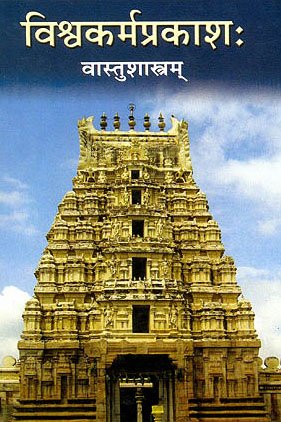
Vastushastra (वास्तुशास्त्र, vāstuśāstra) refers to the ancient Indian science (shastra) of architecture (vastu), dealing with topics such architecture, sculpture, town-building, fort building and various other constructions. Vastu also deals with the philosophy of the architectural relation with the cosmic universe.
Vyakarana (Sanskrit grammar)
Source: Wikisource: A dictionary of Sanskrit grammarAsva (अस्व).—Not homogeneous: asavarṇa. cf. इवर्णादेः अस्वे स्वरे यवरलम् (ivarṇādeḥ asve svare yavaralam) Hem. I.2.21, also अस्वे (asve) Śāk.I.1.73.
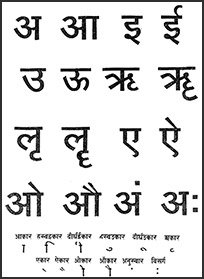
Vyakarana (व्याकरण, vyākaraṇa) refers to Sanskrit grammar and represents one of the six additional sciences (vedanga) to be studied along with the Vedas. Vyakarana concerns itself with the rules of Sanskrit grammar and linguistic analysis in order to establish the correct context of words and sentences.
Dharmashastra (religious law)
Source: Prācyā: Animals and animal products as reflected in Smṛti textsAśva (अश्व) or Turaga refers to the animal “Horse” (Equus caballus).—The Smṛtis mention several domestic as well as wild animals that are enumerated in context of specifying expiation for killing them, the flesh being used as a dietary article to give satisfaction to the Manes (Pitṛs) in Śrāddha rites, the law of transmigration due to various sins committed as well as in the context of specifying gifts to be given on various occasions. These animals [viz., Aśva] are chiefly mentioned in the Manusmṛti, Parāśarasmṛti [Chap.6], Gautamasmṛti [17.2 and 15.1], Śātātapasmṛti [II.45-54], Uśānasmṛti [IX.7-9; IX.12-13], Yājñavalkyasmṛti [I.170-171; I.175; I.258- 260], Viṣṇusmṛti [51.3;51.6;51.26;51.33;80.3-14], Uttarāṅgirasasmṛti [X.15-17], Prajāpatismṛti [Śrāddhatyājyavastuvarṇanam. 138-143], 9 Kāśyapasmṛti [Section on Prāyaścittavarṇanam], Vṛddha Hārītasmṛti [6.253-255] and Kātyāyanasmṛti [27.11].
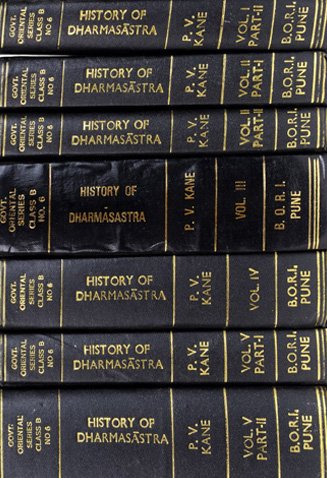
Dharmashastra (धर्मशास्त्र, dharmaśāstra) contains the instructions (shastra) regarding religious conduct of livelihood (dharma), ceremonies, jurisprudence (study of law) and more. It is categorized as smriti, an important and authoritative selection of books dealing with the Hindu lifestyle.
Jyotisha (astronomy and astrology)
Source: Wisdom Library: Brihat Samhita by Varahamihira2) Aśva (अश्व) refers to “horses”, according to the Bṛhatsaṃhitā (chapter 2), an encyclopedic Sanskrit work written by Varāhamihira mainly focusing on the science of ancient Indian astronomy astronomy (Jyotiṣa).—Accordingly, “We shall now proceed to give a brief description of (the qualifications of) a jyotiṣaka. [...] In Yātrā, he must know the fitness or unfitness of a tithi (lunar day), vāra (week day), karaṇa, nakṣatra, muhūrta, and lagna (a sign of zodiac) and yoga for particular purposes. He must be able to interpret natural gestures and dreams; he must be able to state when a prince ought to start for battle to secure success in war; he must be learned in rules relating to ablutions and sacred fire ceremonies in honour of the planets and offerings to evil spirits; he must be able to interpret phenomena connected with such sacred fires and with elephants and horses [i.e., hastin-aśva-iṅgita] while mounting the same”.
2) Aśva (अश्व) is the name of an ancient kingdom or tribe of people, according to the Bṛhatsaṃhitā (chapter 9).—Accordingly, “The four constellations from Bharaṇi are known as the first maṇḍala (circle or division). If Venus should reappear in it there will be prosperity in the land; the people of Vaṅga and of Aṅga, the Mahiṣas, the Vāhlīkās and the Kaliṅgas will be afflicted with fears. If Venus, who so reappears in the said circle, should be crossed by a planet, the rulers of the Bhadrās, of the Aśvas, of Śūrasenakas and of the Yaudheyas and Koṭivarṣa will perish”.
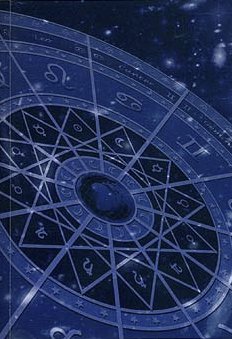
Jyotisha (ज्योतिष, jyotiṣa or jyotish) refers to ‘astronomy’ or “Vedic astrology” and represents the fifth of the six Vedangas (additional sciences to be studied along with the Vedas). Jyotisha concerns itself with the study and prediction of the movements of celestial bodies, in order to calculate the auspicious time for rituals and ceremonies.
Ganitashastra (Mathematics and Algebra)
Source: archive.org: Hindu MathematicsAśva (अश्व) represents the number 7 (seven) in the “word-numeral system” (bhūtasaṃkhyā), which was used in Sanskrit texts dealing with astronomy, mathematics, metrics, as well as in the dates of inscriptions and manuscripts in ancient Indian literature.—A system of expressing numbers by means of words arranged as in the place-value notation was developed and perfected in India in the early centuries of the Christian era. In this system the numerals [e.g., 7—aśva] are expressed by names of things, beings or concepts, which, naturally or in accordance with the teaching of the Śāstras, connote numbers.
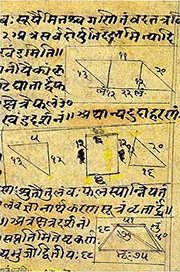
Ganitashastra (शिल्पशास्त्र, gaṇitaśāstra) refers to the ancient Indian science of mathematics, algebra, number theory, arithmetic, etc. Closely allied with astronomy, both were commonly taught and studied in universities, even since the 1st millennium BCE. Ganita-shastra also includes ritualistic math-books such as the Shulba-sutras.
In Buddhism
Mahayana (major branch of Buddhism)
Source: Wisdom Library: Maha Prajnaparamita SastraAśva (अश्व, “horse”) represents an incarnation destination of the tiryaggati (animal realm) according to the “world of transmigration” section in the 2nd century Mahāprajñāpāramitāśāstra (chapter XXVII).—The Bodhisattva sees the animals (tiryak) undergoing all the torments: they are made to gallop by blows of the whip or stick; they are made to make long journeys carrying burdens; their harness is damaged; they are branded with hot iron. People who, in their former lives, have trussed them up, whipped them or been guilty of crimes of this kind, assume the animal form of an elephant (haja), a horse (aśva), a cow (go), a sheep (eḍaka) or a deer (mṛga).
Source: archive.org: Bulletin of the French School of the Far East (volume 5)Aśva (अश्व) (in Chinese: A-che-p'o) refers to one of the fifty-five kingdoms enumerated in chapter 17 of the Candragarbha: the 55th section of the Mahāsaṃnipāta-sūtra, a large compilation of Sūtras (texts) in Mahāyāna Buddhism partly available in Sanskrit, Tibetan and Chinese.—In the Candragarbhasūtra, the Bhagavat invites all classes of Gods and Deities to protect the Law [dharma?] and the faithful in their respective districts.—In Aśva, the following deities are appointed (among others): The Devaputra Rohiṇa; the Yakṣa Maṇicara; the Asura Acula; the Nāgarāja Sūryaprabha [?]; the Kumbhāṇḍa Maṇicari; the Goddesses Durgrahā [?] and Aśvajit [?].
Aśva (अश्व) [?] (in Chinese: A-che-p'o) is the name of an ancient kingdom associated with Ārdrā or Ārdrānakṣatra, as mentioned in chapter 18.
Source: academia.edu: A Study and Translation of the GaganagañjaparipṛcchāAśva (अश्व) refers to “horses”, according to the Gaganagañjaparipṛcchā: the eighth chapter of the Mahāsaṃnipāta (a collection of Mahāyāna Buddhist Sūtras).—Accordingly: “Then the Bodhisattva Apāyajaha addressed himself to the Bodhisattva Gaganagañja: ‘Son of good family, please pacify three evil existences’. [...] Then, the rain of gifts, such as flowers, garlands, incenses, unguents, aromatic powers, religious robes, parasols, banners, pennons, five kinds of musical instruments, songs, male servants, female servants, wives, boys, girls, female attendants, horses (aśva), elephants, [...] poured down from the open space. [...]”.
Source: De Gruyter: A Buddhist Ritual Manual on AgricultureAśva (अश्व) refers to the “horses”, according to the Vajratuṇḍasamayakalparāja, an ancient Buddhist ritual manual on agriculture from the 5th-century (or earlier), containing various instructions for the Sangha to provide agriculture-related services to laypeople including rain-making, weather control and crop protection.—Accordingly, [when the Bhagavān reached the vicinity of the residence of Vaiśravaṇa], “[...] All people, women, men, boys and girls, cattle, horses (aśva), mares, buffaloes, elephants, camels, donkeys and so on became delighted by comfort. That lotus lake had an expansion of two yojanas and [a depth of] a fathom all around in the four directions. [...]”

Mahayana (महायान, mahāyāna) is a major branch of Buddhism focusing on the path of a Bodhisattva (spiritual aspirants/ enlightened beings). Extant literature is vast and primarely composed in the Sanskrit language. There are many sūtras of which some of the earliest are the various Prajñāpāramitā sūtras.
General definition (in Buddhism)
Source: Wisdom Library: Dharma-samgrahaAśva (अश्व, “horse”) or Aśvaratna refers to the “horse jewel” and represents the second of the “seven jewels of universal monarchs” (saptaratna) as defined in the Dharma-saṃgraha (section 85). The Dharma-samgraha (Dharmasangraha) is an extensive glossary of Buddhist technical terms in Sanskrit (e.g., aśva). The work is attributed to Nagarjuna who lived around the 2nd century A.D.
In Jainism
General definition (in Jainism)
Source: Google Books: Jainism: An Indian Religion of SalvationAśva (अश्व, “horse”).—One of the fourteen gems (ratna) serving the Cakravartin;—The aśva is a beautiful horse which is endowed with auspicious signs.

Jainism is an Indian religion of Dharma whose doctrine revolves around harmlessness (ahimsa) towards every living being. The two major branches (Digambara and Svetambara) of Jainism stimulate self-control (or, shramana, ‘self-reliance’) and spiritual development through a path of peace for the soul to progess to the ultimate goal.
India history and geography
Source: Cologne Digital Sanskrit Dictionaries: Indian Epigraphical GlossaryAśva.—(IE 7-1-2), ‘seven’. Note: aśva is defined in the “Indian epigraphical glossary” as it can be found on ancient inscriptions commonly written in Sanskrit, Prakrit or Dravidian languages.

The history of India traces the identification of countries, villages, towns and other regions of India, as well as mythology, zoology, royal dynasties, rulers, tribes, local festivities and traditions and regional languages. Ancient India enjoyed religious freedom and encourages the path of Dharma, a concept common to Buddhism, Hinduism, and Jainism.
Biology (plants and animals)
Source: Google Books: CRC World Dictionary (Regional names)Asva in India is the name of a plant defined with Medicago sativa in various botanical sources. This page contains potential references in Ayurveda, modern medicine, and other folk traditions or local practices It has the synonym Trigonella upendrae H.J. Chowdhery & R.R. Rao (among others).
Example references for further research on medicinal uses or toxicity (see latin names for full list):
· Plantae Veronenses (1754)
· Advances in Plant Taxonomy in Northwest China (1992)
· Saponins.
· Can. J. Comp. Med., (1954)
· Acta Inst. Bot. Acad. Sci. URSS (1953)
· Grassland of China (1986)
If you are looking for specific details regarding Asva, for example chemical composition, side effects, health benefits, pregnancy safety, diet and recipes, extract dosage, have a look at these references.

This sections includes definitions from the five kingdoms of living things: Animals, Plants, Fungi, Protists and Monera. It will include both the official binomial nomenclature (scientific names usually in Latin) as well as regional spellings and variants.
Languages of India and abroad
Sanskrit dictionary
Source: DDSA: The practical Sanskrit-English dictionaryAśva (अश्व).—[aśnute adhvānaṃ vyāpnoti, mahāśano vā bhavati Nir.; aś-kvan Uṇādi-sūtra 1.149]
1) A horse; the horses are said to have 7 breeds:अमृताद् बाष्पतो वह्नेर्वेदेभ्योऽण्डाच्च गर्भतः । साम्नो हयानामुत्पत्तिः सप्तधा परिकीर्तिता (amṛtād bāṣpato vahnervedebhyo'ṇḍācca garbhataḥ | sāmno hayānāmutpattiḥ saptadhā parikīrtitā) ||
2) A symbolical expression for the number 'seven' (that being the number of the horses of the Sun) सूर्याश्वैर्मसजस्तताः सगुरवः शार्दूलविक्रीडितम् (sūryāśvairmasajastatāḥ saguravaḥ śārdūlavikrīḍitam) V. Ratn.
3) A race of men (horselike in strength); काष्ठतुल्यवपुर्धृष्यो मिथ्याचारश्च निर्भयः । द्वादशाङ्गुलमेढ्रश्च दरिद्रस्तु हयो मतः (kāṣṭhatulyavapurdhṛṣyo mithyācāraśca nirbhayaḥ | dvādaśāṅgulameḍhraśca daridrastu hayo mataḥ) ||
-śvau (du.) A horse and a mare.
-śvāḥ horses and mares. [cf. L. equus; Gr. hippos; Zend aspa; Pers. asp.]
Derivable forms: aśvaḥ (अश्वः).
--- OR ---
Aśvā (अश्वा).—A mare.
--- OR ---
Asva (अस्व).—a.
1) Indigent, poor (nāsti svaṃ dhanaṃ yasya) स्मृत्यनुरोधादस्वा स्यात् (smṛtyanurodhādasvā syāt) ŚB. on MS.6.1.2.
2) Not one's own.
--- OR ---
Āśva (आश्व).—a. (-śvī f.) [अश्वस्येदम् अण् (aśvasyedam aṇ)]
1) Belonging to or coming from a horse, equestrian; आश्वं कफहरं मूत्रं कृमि- दद्रुषु शस्यते (āśvaṃ kaphaharaṃ mūtraṃ kṛmi- dadruṣu śasyate) Suśr.
2) Drawn by horses (as a chariot).
-śvam 1 A number of horses.
2) A chariot drawn by horses.
3) The state or action of a horse (aśvasya bhāvaḥ karma vā Sk.).
Source: Cologne Digital Sanskrit Dictionaries: Edgerton Buddhist Hybrid Sanskrit DictionaryAśva (अश्व).—(-aśva), see gajāśva.
Source: Cologne Digital Sanskrit Dictionaries: Shabda-Sagara Sanskrit-English DictionaryAśva (अश्व).—m.
(-śvaḥ) 1. A horse. 2. A set or cast of men horse-like in strength. du. (-śvī) A horse and a mare. f.
(-śvā) A mare. E. aśa to pervade, kvan Unadi affix, and ṭāp fem. aff.
--- OR ---
Asva (अस्व).—mfn.
(-svaḥ-svā-svaṃ) Not one’s own. E. a neg. sva own.
--- OR ---
Āśva (आश्व).—mfn.
(-śvaḥ-śvī-śvaṃ) Relating to a horse, drawn by horses, equestrain, &c. n.
(-śvaṃ) 1. A number of horses. 2. A chariot drawn by horses. E. aśva a horse, and aṇ aff.
Source: Cologne Digital Sanskrit Dictionaries: Benfey Sanskrit-English DictionaryAśva (अश्व).—[aś + va] (see vb. śo). I. m. A horse, [Mānavadharmaśāstra] 7, 96. Ii. f. vā, A mare, [Rājataraṅgiṇī] 5, 415.
Source: Cologne Digital Sanskrit Dictionaries: Cappeller Sanskrit-English DictionaryAśva (अश्व).—[masculine] horse, a man’s name; [feminine] ā mare.
--- OR ---
Āśva (आश्व).—[adjective] belonging to or coming from horses.
Source: Cologne Digital Sanskrit Dictionaries: Monier-Williams Sanskrit-English Dictionary1) Aśva (अश्व):—1. aśva m. (2. rarely 3 [Ṛg-veda]) (√1. aś, [Uṇādi-sūtra]) ifc. f. a horse, stallion, [Ṛg-veda] etc.
2) the horse (in the game of chess)
3) the number ‘seven’ (that being the number of the horses of the sun)
4) the archer (in the Zodiac), [Varāha-mihira’s Bṛhajjātaka]
5) a particular kind of lover (horse-like in strength), [cf. Lexicographers, esp. such as amarasiṃha, halāyudha, hemacandra, etc.]
6) Name of a teacher (with the patron. Sāmudri), [Śatapatha-brāhmaṇa xiii]
7) of a son of Citraka, [Harivaṃśa 1921]
8) of a Dānava, [Mahābhārata i, 2532]
9) Aśvā (अश्वा):—[from aśva] f. ([gana] ajādi q.v.) a mare, [Ṛg-veda] etc.
10) Aśva (अश्व):—[Zend] aspa; [Latin] equus; [Greek] ἵππος, etc.
11) 2. aśva [Nominal verb] [Parasmaipada] aśvati, to behave like a horse, [Pāṇini 3-1, 11 [Scholiast or Commentator]]
12) Asva (अस्व):—[=a-sva] mfn. having no property, [Mahābhārata]
13) Āśva (आश्व):—mf(ī)n. ([from] aśva), belonging to a horse, equestrian, [Nirukta, by Yāska; Suśruta]
14) drawn by horses (as a chariot) [commentator or commentary] on [Pāṇini]
15) n. a number of horses, [Pāṇini]
16) the state or action of a horse [commentator or commentary] on [Pāṇini]
17) Name of several Sāmans.
Source: Cologne Digital Sanskrit Dictionaries: Yates Sanskrit-English Dictionary1) Aśva (अश्व):—(śvaḥ) 1. m. A horse.
2) Asva (अस्व):—[a-sva] (svaḥ-svā-svaṃ) a. Another's.
3) Āśva (आश्व):—(śvaḥ) 1. m. A number of horses.
Source: DDSA: Paia-sadda-mahannavo; a comprehensive Prakrit Hindi dictionary (S)Asva (अस्व) in the Sanskrit language is related to the Prakrit words: Assa, Āsa.
[Sanskrit to German]
Sanskrit, also spelled संस्कृतम् (saṃskṛtam), is an ancient language of India commonly seen as the grandmother of the Indo-European language family (even English!). Closely allied with Prakrit and Pali, Sanskrit is more exhaustive in both grammar and terms and has the most extensive collection of literature in the world, greatly surpassing its sister-languages Greek and Latin.
Hindi dictionary
Source: DDSA: A practical Hindi-English dictionaryAśva (अश्व) [Also spelled asv]:—(nm) a horse; ~[medha] ([yajña]) the horse sacrifice—a celebrated ceremony dating back to the Vedic period, performed by a monarch desirous of becoming a [cakravartī].
...
Kannada-English dictionary
Source: Alar: Kannada-English corpusAśva (ಅಶ್ವ):—
1) [noun] any of several domesticated or wild varieties of a large, strong species (Equus caballus) of perissodactylous mammal having a long, flowing tail, used for transportation, work, etc.; a horse.
2) [noun] a kind of men (who are strong like horse, in work or in sexual potency).
3) [noun] a medicinal substance.
--- OR ---
Asva (ಅಸ್ವ):—[noun] a man owning nothing; a man who has no properties, belongings of his own.
--- OR ---
Āśva (ಆಶ್ವ):—[adjective] of, belonging or relating to horse.
--- OR ---
Āśva (ಆಶ್ವ):—[noun] a multitude of horses.
Kannada is a Dravidian language (as opposed to the Indo-European language family) mainly spoken in the southwestern region of India.
See also (Relevant definitions)
Starts with (+495): Agvaikavimsha, Agvanusarana, Agvavatara, Ashva-ghasa-kayastha, Ashva-sadhanika, Ashva-samstha, Ashvabadava, Ashvabahu, Ashvabala, Ashvaballava, Ashvabandha, Ashvabandhaka, Ashvabandhana, Ashvabha, Ashvabhadra, Ashvabhakshaka, Ashvabhara, Ashvabharika, Ashvabhidhani, Ashvabhidhanikrita.
Ends with (+199): Abadhyashva, Abhyutthitashva, Adhyashva, Adhyushitashva, Adyashva, Aghashva, Ajakashva, Ajashva, Akarshashva, Akrishashva, Akritashva, Akshayashva, Amitashva, Anashva, Arunashva, Aryashva, Ashvashva, Ashvatarashva, Avadhyashva, Ayutashva.
Full-text (+882): Assa, Ashvaghna, Ashvavara, Ashvamishti, Ashvabala, Ashvasadin, Ashvakandika, Ashvashala, Ashvavala, Ashvaroha, Ashvavid, Ashvavat, Ashvaratha, Ashvahridaya, Ashvaprishtha, Asvatva, Ashvaka, Ashvalala, Ashvavaraka, Ashvamahishika.
Relevant text
Search found 89 books and stories containing Ashva, A-sva, Aśva, Aśvā, Asva, Āśva, Āsva; (plurals include: Ashvas, svas, Aśvas, Aśvās, Asvas, Āśvas, Āsvas). You can also click to the full overview containing English textual excerpts. Below are direct links for the most relevant articles:
Rig Veda (translation and commentary) (by H. H. Wilson)
Garga Samhita (English) (by Danavir Goswami)
Verse 5.4.32 < [Chapter 4 - The Journey to Śrī Mathurā]
Verse 6.8.7 < [Chapter 8 - The Marriages of All the Queens]
Verse 5.24.17 < [Chapter 24 - The Killing of the Kola Demon]
Women in the Atharva-veda Samhita (by Pranab Jyoti Kalita)
5c. Hymn to Sterilize a Rival Woman < [Chapter 2 - The Strīkarmāṇi Hymns of the Atharvaveda]
5b. Hymns to Obtain a Son < [Chapter 2 - The Strīkarmāṇi Hymns of the Atharvaveda]
6a. Hymns to Secure the Love of a Woman < [Chapter 2 - The Strīkarmāṇi Hymns of the Atharvaveda]
Vakyapadiya of Bhartrihari (by K. A. Subramania Iyer)
Verse 1.148 < [Book 1 - Brahma-kāṇḍa (or Āgama-samuccaya)]
Verse 3.14.303 < [Book 3 - Pada-kāṇḍa (14): Vṛtti-samuddeśa (On Ccomplex Formation)]
Verse 2.268 < [Book 2 - Vākya-kāṇḍa]
Sahitya-kaumudi by Baladeva Vidyabhushana (by Gaurapada Dāsa)
Text 7.28 < [Chapter 7 - Literary Faults]
Text 7.89 < [Chapter 7 - Literary Faults]
The Agni Purana (by N. Gangadharan)

